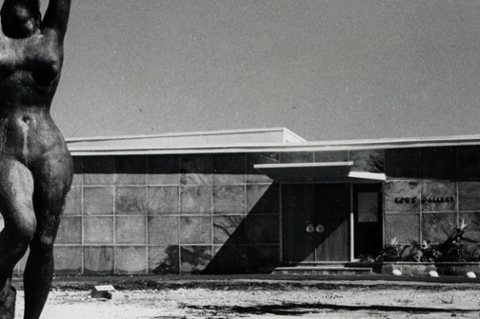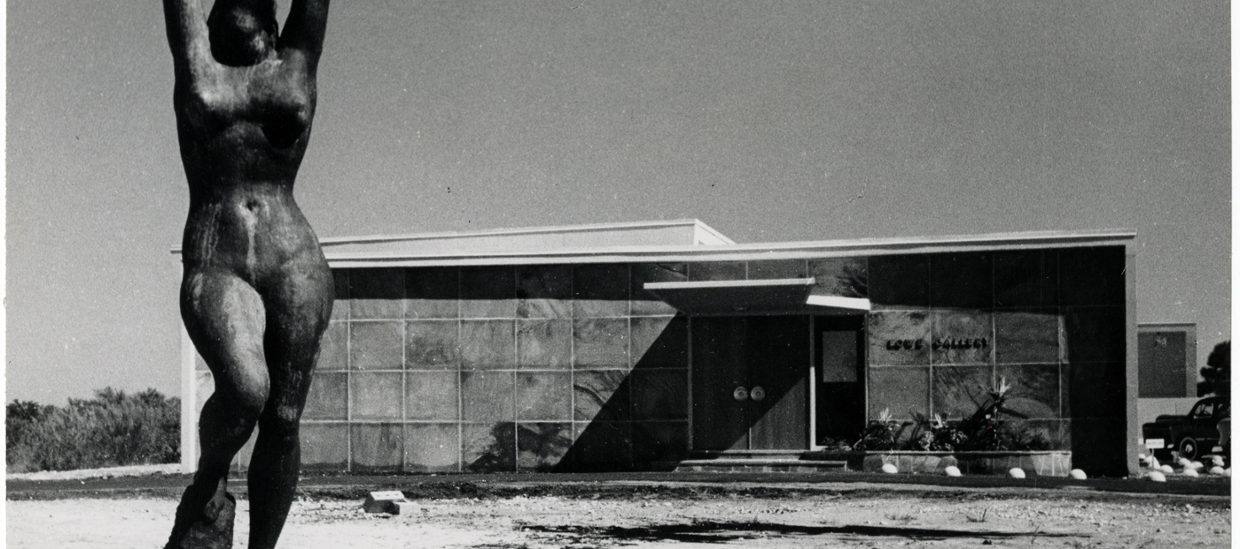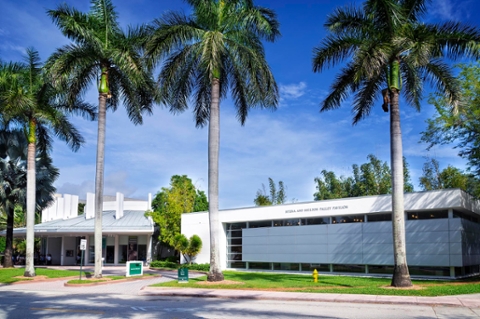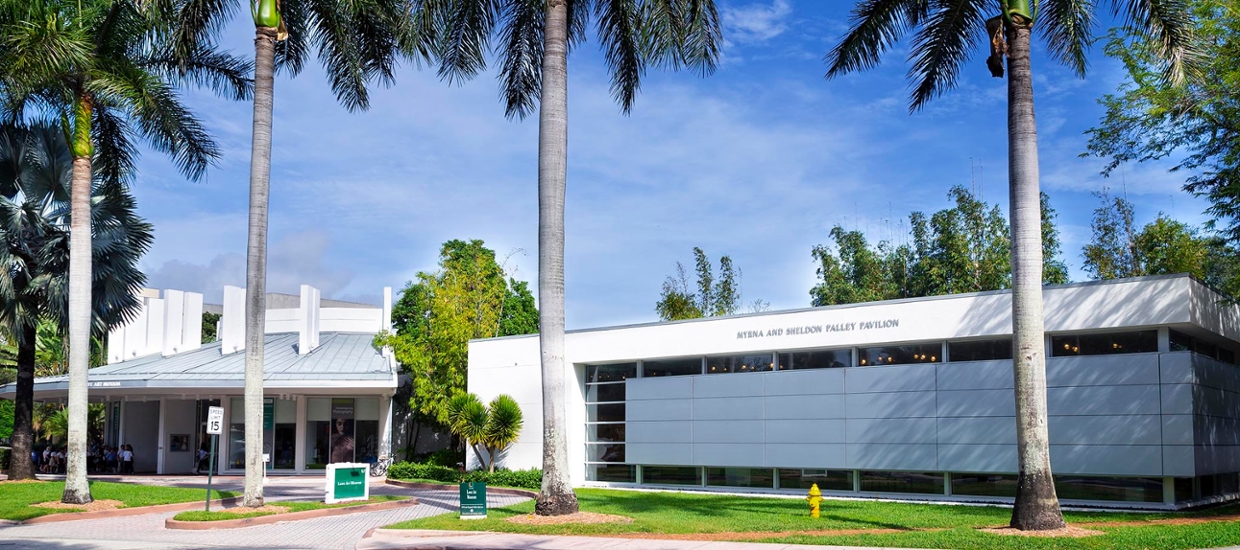On February 22, 1950, the University of Miami inaugurated what would later become the Lowe Art Museum in the University’s newly completed Merrick Classroom Building. As the City of Miami’s first professional art exhibition space, the “University Art Gallery” was founded to serve academics, students, and members of the general public throughout the region.
Just one year later (1951), Miami philanthropists Joe and Emily Lowe underwrote the construction of a separate art museum on UM’s still-young campus: the new “Lowe Art Gallery” was formally dedicated on February 4, 1952. By that time, the Lowe had already begun assembling important collections of non-Western art, including significant examples of Asian, Ancient American, and African art. In 1956 Alfred I. Barton donated his extensive collection of Native American art to the Gallery. A 1,300 square foot addition was built that same year to permanently display the Barton Collection, which remains one of the finest such collections in the country. Five years later, the gallery was selected as a regional repository for more than forty works from the Samuel H. Kress Collection of European Renaissance and Baroque art. An addition was built in 1961 to accommodate this gift, increasing the Lowe’s total footprint to 23,100 square-feet of exhibition and administrative space.
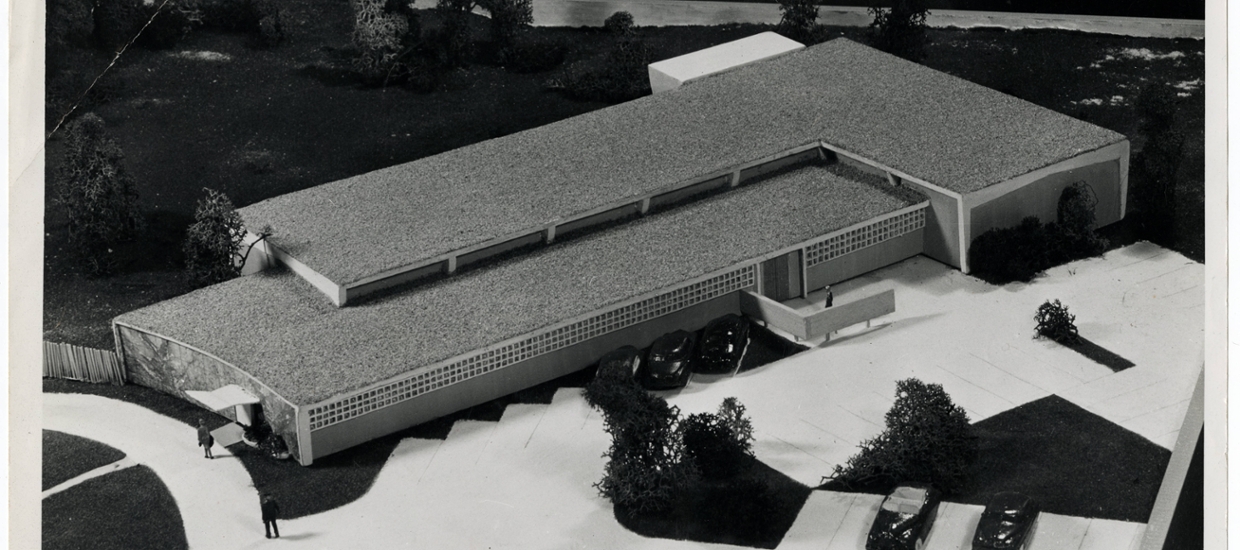
Historic image of model of the original museum building
In 1968, the Lowe Art Gallery became the “Lowe Art Museum,” which, in 1972, became the first museum in Miami-Dade County to be professionally accredited by the American Alliance of Museums. In 1985, the museum was recognized by the State of Florida as a major cultural facility and resource, the first museum in Miami-Dade County to be thus honored. The Lowe continued to make important art acquisitions (primarily through gift acceptance) in the intervening years, including works by Washington Allston, Sofonisba Anguissola, Dale Chihuly, Chryssa, Thomas Gainsborough, Paul Gauguin, George Inness, Roy Lichtenstein, Claude Monet, Rembrandt Peale, Pablo Picasso, Henry Raeburn, Frank Stella, Andy Warhol, and Zao Wou-Ki.
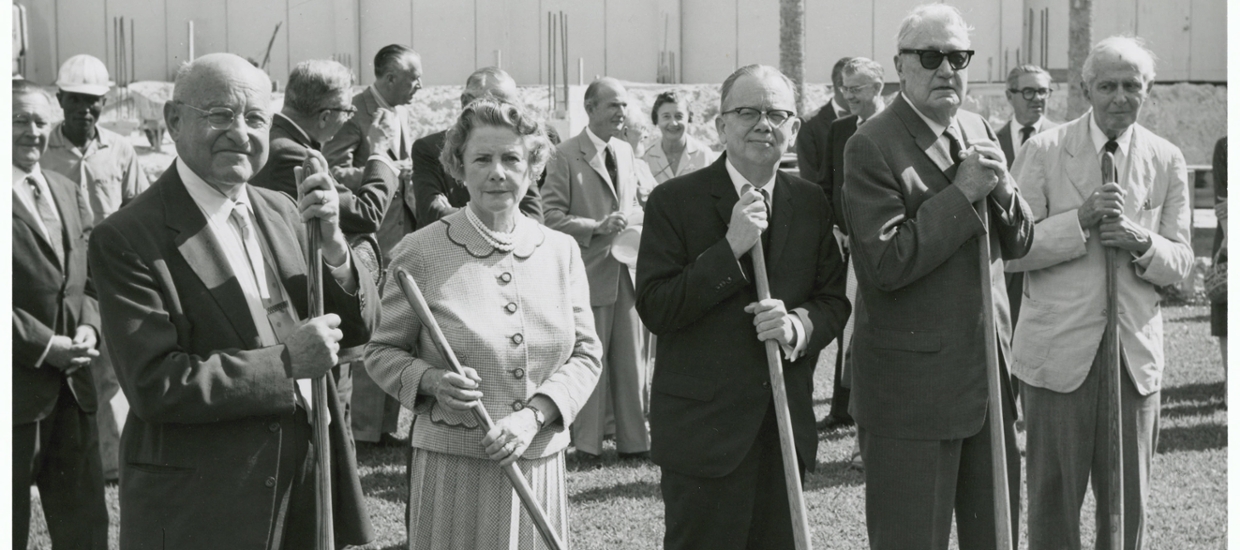
President Pearson and dignitaries at the groundbreaking ceremony for the original museum
The rapid growth of the museum’s collections necessitated a major expansion in 1991; the first in 34 years. Miami architect Charles Harrison Pawley was selected for this $3.6 million project, which, once completed in 1996, added 13,000 square feet of temporary and permanent exhibition gallery space to the museum. The project also addressed the need for new HVAC, security, and fire protection systems and created a unifying facade for the building.
The most recent addition to the Lowe, the Myrna and Sheldon Palley Pavilion for Contemporary Glass and Studio Arts, opened in 2008 and was fully reinstalled in February 2018. The Lowe’s comprehensive collection now comprises nearly 19,500 objects, which collectively represent more than 5,000 years of human creativity on every inhabited continent.



